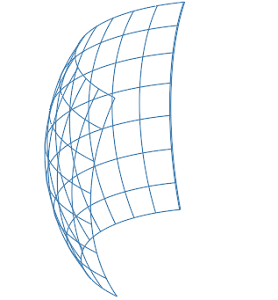Sensors Overview
Sensors integrate rays coming from the source to analyze the optical result.
 |
 |
 |
| Irradiance Sensor | Radiance Sensor | Intensity Sensor |
Sensors allow to integrate and analyze rays coming from the sources contained in an optical system.
A wide variety of sensors are available to cover different needs and configurations.
The sensors can be used to compute power and analyze how a source is emitting and what is its intensity/emission pattern or to create perspective and viewpoints to see how a system is perceived by an eye, an observer.
Types of Sensors
- The Radiance Sensor allows you to compute radiance (in watt/sr/m2) or luminance (in candela/m2).
- The Irradiance Sensor allows you to compute irradiance (in watt/m2) or illuminance (in Lux).
- The Intensity Sensor allows you to compute radiant intensity (in watt/sr) or luminance intensity (in candela).
- The 3D Irradiance Sensor allows you to compute irradiance of volume bodies or faces.
- The Human Eye Sensor allows you to accurately simulate human vision by considering the physiological characteristics of the eye.
- The Immersive Sensor allows you to observe all the objects surrounding a defined point of view. A point is placed in the scene and the sensor restitutes what is viewed from the scene from this specific point.
- The 3D Energy Density Sensor allows you to compute the energy density carried out by the light in Lumen/m3 or Watt/m3 which can be useful when working with highly diffusive materials, wanting to track some hot spots or wanting to visualize the rays' distribution inside the volume itself.
- The Observer Sensor allows you to create an observer point in the scene.
- The Light Field Sensor allows you to measure the distribution of light hitting a surface and to generate a Light Field file storing light distribution on this selected surface.
- The Camera Sensor allows you to simulate rays integration as in a real camera.
- The Physical Camera allows you to create a lens system with its own optimized propagation engine, to be included in a bigger optical system, which improves the convergence when propagating rays and considers ghost images.
- The LiDAR Sensor allows you to create a LiDAR source and sensor that can be used for LiDAR simulation.
- The Geometric Rotating LiDAR sensor allows you to perform field of view studies to quickly identify how to optimize your LiDAR system.
- The Light Expert Group is dedicated to perform a Light Expert analysis for several sensors at the same time.
In Speos
You can manage all the characteristics of the sensors: its size, position, orientation, wavelength sensitivity etc.
To create a sensor you have to define several parameters: (The parameters vary based on the type of sensor.)


